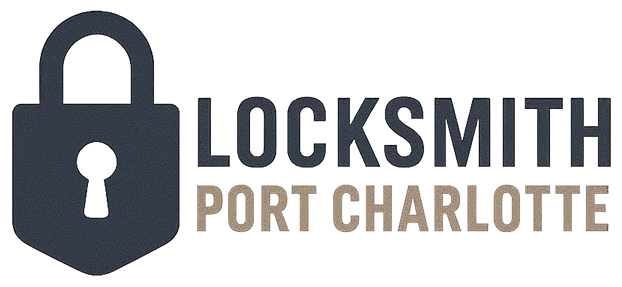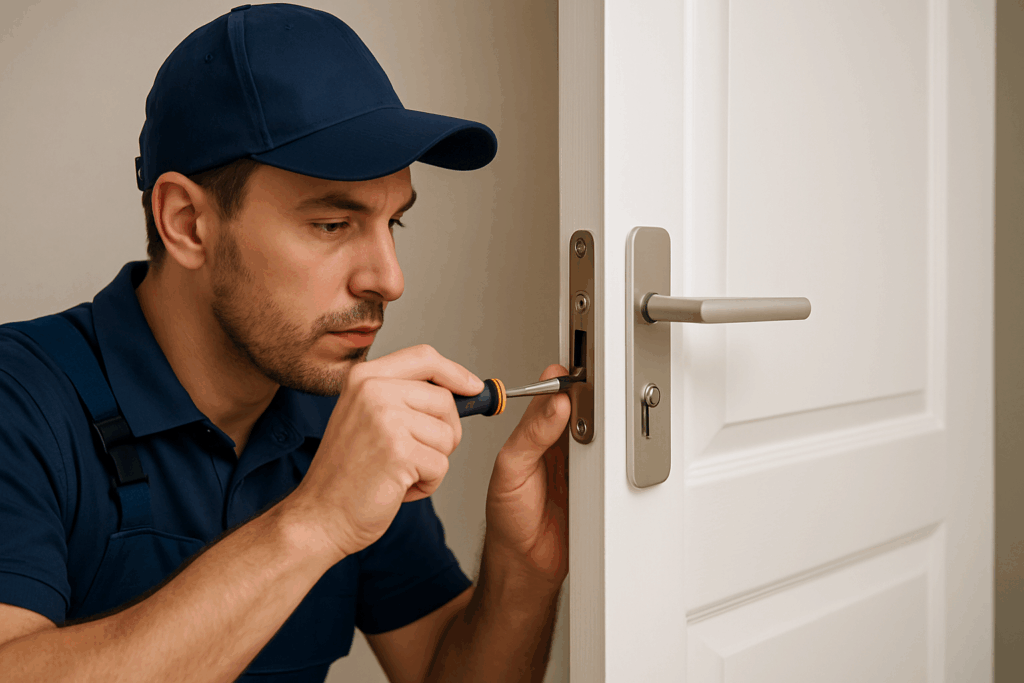Tips for Hiding Keys in Plain Sight Safely
Spare keys are lifesavers during lockouts—but if they’re stashed poorly, they can turn into a security risk. This guide shows smart, low-profile ways to store backups in everyday environments, how to avoid predictable hiding spots, and when to skip hiding entirely in favor of better options.
First Principles: Make the Spare the Hardest Path
Hiding a key “in plain sight” means blending it so thoroughly with normal life that it draws zero attention. Think misdirection, rotation, and redundancy. A good plan assumes curious kids, observant neighbors, service providers coming and going, and even someone watching your routine. The spare should be harder to find than it is to bypass your door with brute force. If your hiding place is obvious or static, it’s not safe.
Before you begin, inventory who truly needs access (family, a trusted neighbor, property manager). Then choose one or two secure methods that fit your home’s layout and your habits. Avoid anything you’ll forget or neglect to maintain—security that depends on memory alone will fail when you’re stressed or in a rush.
In-Plain-Sight Hiding Spots That Age Well
The best “plain sight” locations camouflage a key inside common objects, spread out across your property, and avoid the door perimeter. Use tough containers, weather awareness, and periodic rotation.
Disguised Hardware Containers
Use weatherproof, rust-resistant micro-containers disguised as sprinkler heads, hose-fittings, or masonry plugs. Place them away from the entry path and bury flush with soil or gravel; record exact placement on your phone (with a neutral label).
Outdoor Utility Camouflage
Hollow spaces behind fixed exterior features—like the base of a non-removable light fixture or under a sealed utility box lip—can hold a micro-tube. Ensure screws are tamper-resistant and the container is sealed against humidity.
Garden Misdirection (Not Under the Mat)
Skip fake rocks and doormats. Instead, use a labeled irrigation tag tied to a specific shrub row number in your notes, then place the container at that offset. Garden changes won’t break your memory, and nobody inspects measured offsets.
Detached Structure Cache
A shed or fence post with a capped cavity is less obvious than the porch. Use a magnetic tube inside a metal post; seal the cap with a friction fit so it looks undisturbed even on close inspection.
Vehicle-Adjacent (But Not Inside)
Don’t keep a home key in your car. If you must, avoid glove boxes and wheel wells. Better: place a sealed container under landscape edging right where you park—familiar to you, meaningless to others.
Removable Trim Tricks
A short piece of exterior trim with a concealed friction clip can hide a flat key. Paint edges so the seam is invisible. Only use where trim is tall and rarely handled; log the clip’s position privately.
Mailbox Area—but Not the Box
It’s illegal in many areas to place items inside a USPS mailbox; avoid it. Instead, embed a micro-tube into landscaping stone at the base of the post, secured with clear outdoor adhesive and dusted with soil.
Meter Reading Zone Decoy
Near gas/electric meters, use a small, magnet-backed container adhered to painted metal plate behind a conduit—out of direct view. Keep it dry and ensure it doesn’t impede utility access.
What to Do—and What to Skip
Combine concealment with key control and routine checks. Small habits make a huge difference.
Do: Rotate & Record
Change locations every 3–6 months. Store a neutral “context note” (e.g., “Irrigation R2-07”) in your password manager, not a photo.
Do: Use Flat or Do-Not-Duplicate Keys
Prefer a key profile with lower re-cut risk. Ask your locksmith about restricted keyways for more control.
Do: Weatherproof
Use O-ring or gasketed capsules with silica gel. Florida-style humidity corrodes brass & steel quickly.
Don’t: Obvious Spots
No doormats, door frames, fake rocks, grill side shelves, or top-of-the-door jambs. Burglars check those first.
Don’t: Containers That Scream “Key”
Novelty hide-a-keys are widely known. Use generic hardware or garden items instead.
Don’t: Weak Magnets
Heat, vibration, and moisture loosen cheap magnet boxes. If using magnetic, choose rated neodymium, clean surfaces, and tether with cable.
When Not to Hide a Key at All
Sometimes the safest “hide” is no hide. Use controlled access options that remove the physical spare from the equation.
Smart Deadbolts with Code Access
Set time-bound codes for neighbors or sitters. Keep a mechanical key override but store it in a lockbox, not outdoors.
Realtor-Style Outdoor Lockbox
Choose a shrouded, weather-rated box anchored to masonry or a hidden steel eye bolt. Use long, unique passcodes and rotate after each use.
Trusted Neighbor Network
Two separate neighbors each hold half of the solution: one keeps the key, the other knows the address code. Neither can access alone.
Property Manager or Concierge
For condos or rentals, rely on on-site key control with sign-out tracking instead of outdoor caches that may violate rules.
Renters, Landlords, Vehicles, and Vacations
Tailor your approach to your living arrangement and travel patterns; each scenario changes risk and responsibility.
Renters & HOA Rules
Check lease/HOA policies. Many prohibit exterior modifications or lockboxes on common elements. Consider neighbor-held keys or code access instead.
Landlords
Maintain a master key system and documented key logs. Avoid hidden spares on premises; use sealed management lockboxes secured indoors.
Vehicles
For car spares, use OEM-style key cards or coded key vaults at home; avoid magnetic under-car boxes. If necessary for travel, tethered vaults inside the cabin are safer than exterior hides.
Travel Periods
Rotate the hide before leaving, freeze package deliveries, and schedule neighbor checks. Avoid social posts that reveal you’re away.
Rotation, Weather, and Access Hygiene
A hidden key is not “set and forget.” Moisture, landscaping changes, and routine patterns can expose your plan.
Quarterly Rotation
Move the cache seasonally and update your neutral note. Replace silica gel, wipe the key with a corrosion inhibitor, and inspect seals.
Two-Person Rule for Disclosure
Only share the location in person, with one trusted adult at a time. If you disclose digitally, use temporary encrypted messages and change the spot immediately after use.
Event-Triggered Changes
After contractors, parties, or property photos, assume your routine was observed. Rotate the location and rekey if a tag or code card went missing.
Household Drills
Walk family members through the process during daylight. Practice retrieving the spare discreetly, then returning it without leaving trace marks.
Legal and Ethical Considerations
Never place items in or on regulated utility equipment or inside postal boxes where prohibited. Do not embed containers in city trees, sidewalks, or neighbors’ property. If you share a dwelling, agree on policies for who may access the spare and under what conditions. When a roommate moves out or staff roles change, rekey and retire old caches immediately.
If you lose track of who knows the location, assume compromise: relocate the spare and consider a rekey. It’s a small cost compared with the risk of unauthorized entry.
Common Questions About Hidden Keys
Quick answers to help you choose the safest approach for your home and family.
Is it ever “safe enough” to hide a key by the front door?
What’s better: lockbox or disguised container?
How many people should know the location?
What if my spare rusted and won’t turn?
How a Locksmith Improves Your Plan
A locksmith reviews door and frame strength, suggests pick- and bump-resistant cylinders, sets up restricted keyways, and can install a weather-rated lockbox or smart lock—often eliminating the need to hide a physical spare at all.
Hardware That Resists Attack
Modern cylinders, reinforced strikes, and longer screws make forced entry harder than finding any spare.
Smart Access, Fewer Keys
Time-bound codes and app alerts replace outdoor hides while preserving emergency access for trusted people.
Key Control & Documentation
Clear logs and restricted blanks reduce unauthorized copies and help you track who holds what.
Climate-Aware Solutions
Weather-resistant materials and correct fasteners prevent corrosion and stuck locks in humid environments.
Build a Spare-Key Plan You Can Trust
Whether you choose a disguised container, a hardened lockbox, or smart-lock codes, pair it with strong hardware and regular maintenance. Want help designing a plan for your property? Get a quick assessment and practical recommendations from a pro.

